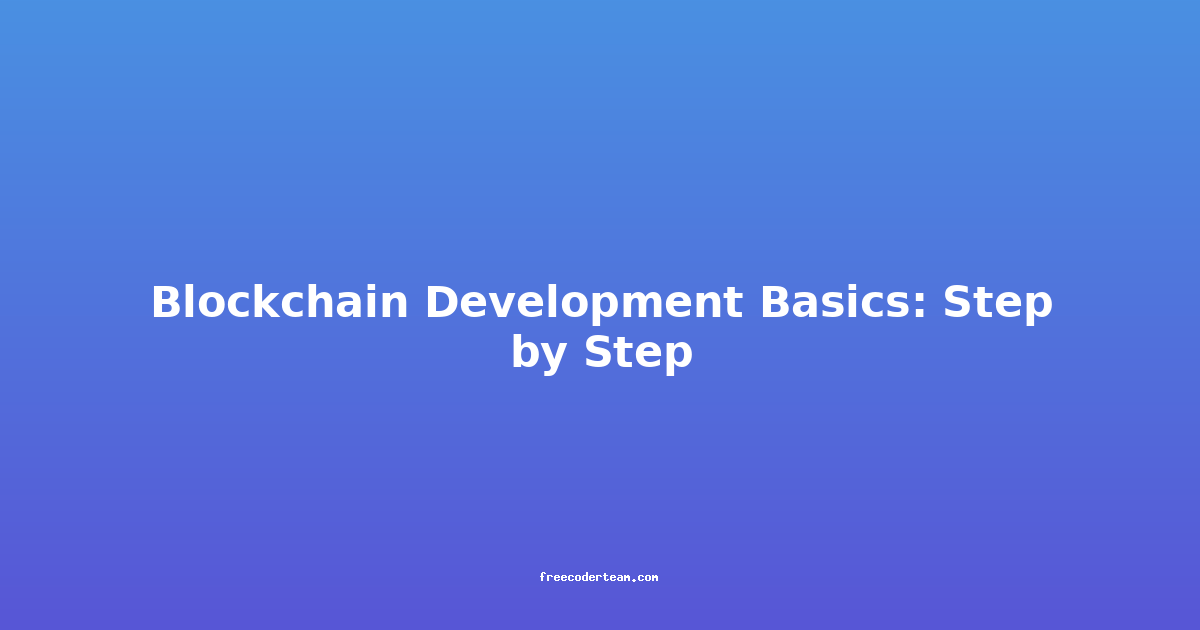Modern Approach to JavaScript ES6+ Features: Step by Step
JavaScript has evolved significantly since its inception, and with the introduction of ES6 (ECMAScript 2015) and subsequent updates, it has become a more powerful and expressive language. In this blog post, we'll explore some of the most impactful ES6+ features, providing practical examples, best practices, and actionable insights to help you leverage these features effectively in your projects.
Table of Contents
- Introduction to ES6+
- 1. Arrow Functions
- 2. Template Literals
- 3. Destructuring Assignment
- 4. Classes
- 5. Promises and Async/Await
- 6. Modules
- 7. Spread and Rest Operators
- 8. Map and Set
- 9. Best Practices and Actionable Insights
- Conclusion
Introduction to ES6+
ES6, released in 2015, introduced a host of new features that made JavaScript more concise, readable, and maintainable. Since then, subsequent updates (ES7, ES8, etc.) have continued to enhance the language. These features have transformed JavaScript from a simple scripting language into a robust tool for building complex applications.
In this post, we'll focus on some of the most widely used and impactful ES6+ features, providing practical examples and insights into how they can improve your code.
1. Arrow Functions
Arrow functions are a concise way to write functions in JavaScript. They are particularly useful for callbacks and when you need to preserve the this context.
Syntax
// Regular function
function add(a, b) {
return a + b;
}
// Arrow function
const add = (a, b) => a + b;
Example: Using Arrow Functions in Callbacks
const numbers = [1, 2, 3, 4, 5];
// Using a regular function
numbers.forEach(function(num) {
console.log(num * 2);
});
// Using an arrow function
numbers.forEach(num => console.log(num * 2));
Best Practices
- Use arrow functions for concise one-liners.
- Avoid using them when you need to bind
thisexplicitly (e.g., in class methods).
2. Template Literals
Template literals allow you to embed expressions inside string literals using backticks (`). They are especially useful for creating complex strings and multi-line text.
Syntax
const name = "Alice";
const age = 30;
// Regular string concatenation
console.log("Hello, " + name + "! You are " + age + " years old.");
// Template literal
console.log(`Hello, ${name}! You are ${age} years old.`);
Example: Multi-line Strings
const message = `Hello, world!
This is a multi-line string.
It's easy to read and maintain.`;
console.log(message);
Best Practices
- Use template literals for readable string interpolation.
- Avoid overusing them in performance-critical code, as they can be slightly slower than concatenation.
3. Destructuring Assignment
Destructuring allows you to extract values from arrays or properties from objects into distinct variables. This makes code more concise and easier to read.
Syntax
// Array destructuring
const [a, b] = [1, 2];
console.log(a); // 1
console.log(b); // 2
// Object destructuring
const person = { name: "Alice", age: 30 };
const { name, age } = person;
console.log(name); // Alice
console.log(age); // 30
Example: Function Parameters
function greet({ name, age }) {
console.log(`Hello, ${name}! You are ${age} years old.`);
}
const person = { name: "Bob", age: 25 };
greet(person); // Hello, Bob! You are 25 years old.
Best Practices
- Use destructuring to simplify function parameter handling.
- Be cautious with deeply nested destructuring to avoid readability issues.
4. Classes
ES6 introduced a class syntax that provides a more familiar way to work with objects and inheritance compared to traditional prototypes.
Syntax
class Person {
constructor(name, age) {
this.name = name;
this.age = age;
}
greet() {
console.log(`Hello, my name is ${this.name} and I am ${this.age} years old.`);
}
}
const alice = new Person("Alice", 30);
alice.greet(); // Hello, my name is Alice and I am 30 years old.
Example: Inheritance
class Student extends Person {
constructor(name, age, grade) {
super(name, age);
this.grade = grade;
}
study() {
console.log(`${this.name} is studying for grade ${this.grade}.`);
}
}
const bob = new Student("Bob", 20, "A");
bob.greet(); // Hello, my name is Bob and I am 20 years old.
bob.study(); // Bob is studying for grade A.
Best Practices
- Use classes for clear object-oriented patterns.
- Avoid overusing inheritance; favor composition when appropriate.
5. Promises and Async/Await
Promises provide a way to handle asynchronous operations in a cleaner and more readable manner. Async/await further simplifies asynchronous code by making it look synchronous.
Syntax
// Promise
const fetchData = () => {
return new Promise((resolve, reject) => {
setTimeout(() => {
resolve("Data fetched successfully!");
}, 1000);
});
};
fetchData()
.then(data => console.log(data))
.catch(error => console.error(error));
// Async/await
const fetchDataAsync = async () => {
try {
const data = await fetchData();
console.log(data);
} catch (error) {
console.error(error);
}
};
fetchDataAsync();
Example: Fetching Data from an API
const fetchUserData = async (userId) => {
try {
const response = await fetch(`https://api.example.com/users/${userId}`);
const data = await response.json();
console.log(data);
} catch (error) {
console.error("Failed to fetch user data:", error);
}
};
fetchUserData(123);
Best Practices
- Use Promises for handling asynchronous operations.
- Prefer async/await for better readability in complex asynchronous flows.
6. Modules
ES6 introduced native module support, allowing you to organize your code into reusable modules. This is a significant improvement over the global namespace approach.
Syntax
// math.js
export const add = (a, b) => a + b;
export const subtract = (a, b) => a - b;
// main.js
import { add, subtract } from './math.js';
console.log(add(1, 2)); // 3
console.log(subtract(5, 3)); // 2
Example: Exporting and Importing Modules
// utils.js
export function logMessage(message) {
console.log(message);
}
export class Timer {
constructor() {
this.startTime = Date.now();
}
getElapsedTime() {
return Date.now() - this.startTime;
}
}
// app.js
import { logMessage } from './utils.js';
import { Timer } from './utils.js';
logMessage("Application started");
const timer = new Timer();
setTimeout(() => {
console.log(`Elapsed time: ${timer.getElapsedTime()} ms`);
}, 1000);
Best Practices
- Use modules to organize your code into logical units.
- Avoid exporting too many things from a single module to keep it focused.
7. Spread and Rest Operators
The spread operator (...) allows you to expand arrays or objects, while the rest operator (...) allows you to collect multiple arguments into an array.
Syntax
// Spread operator
const numbers = [1, 2, 3];
const moreNumbers = [...numbers, 4, 5];
console.log(moreNumbers); // [1, 2, 3, 4, 5]
// Rest operator
function sum(...args) {
return args.reduce((acc, num) => acc + num, 0);
}
console.log(sum(1, 2, 3, 4)); // 10
Example: Merging Objects
const obj1 = { a: 1, b: 2 };
const obj2 = { b: 3, c: 4 };
const merged = { ...obj1, ...obj2 };
console.log(merged); // { a: 1, b: 3, c: 4 }
Best Practices
- Use the spread operator for merging arrays or objects.
- Use the rest operator for functions that accept a variable number of arguments.
8. Map and Set
ES6 introduced Map and Set as new data structures that provide more powerful alternatives to traditional arrays and objects.
Map
A Map is a collection of key-value pairs where keys can be of any type.
const map = new Map();
map.set("name", "Alice");
map.set("age", 30);
console.log(map.get("name")); // Alice
console.log(map.size); // 2
Set
A Set is a collection of unique values.
const set = new Set([1, 2, 2, 3, 4]);
console.log(set); // Set { 1, 2, 3, 4 }
console.log(set.size); // 4
Example: Using Map for Counting Occurrences
const words = ["apple", "banana", "apple", "orange", "banana"];
const wordCount = new Map();
words.forEach(word => {
wordCount.set(word, (wordCount.get(word) || 0) + 1);
});
console.log(wordCount); // Map { 'apple' => 2, 'banana' => 2, 'orange' => 1 }
Best Practices
- Use
Mapwhen you need to store key-value pairs with non-string keys. - Use
Setwhen you need to store unique values.
9. Best Practices and Actionable Insights
1. Write Concise and Readable Code
- Use arrow functions, template literals, and destructuring to make your code more concise.
- Avoid overusing features like spread/rest operators in complex scenarios where they might reduce readability.
2. Embrace Asynchronous Programming
- Use Promises and async/await to handle asynchronous operations in a clean and maintainable way.
- Avoid callback hell by chaining Promises or using async/await.
3. Organize Your Code with Modules
- Break your code into small, reusable modules to improve maintainability.
- Use named exports for clarity and default exports when appropriate.
4. Leverage Modern Data Structures
- Use
MapandSetwhen traditional arrays or objects don't meet your needs. - Avoid using
MaporSetwhen simple arrays or objects suffice.
5. Test Your Code
- Write unit tests for your modules and asynchronous functions to ensure they behave as expected.
- Use tools like Jest or Mocha for testing.
Conclusion
ES6+ features have transformed JavaScript into a more expressive and powerful language. By leveraging arrow functions, template literals, destructuring, classes, Promises, async/await, modules, and modern data structures, you can write cleaner, more maintainable, and efficient code.
Remember, the key to mastering these features is practice. Start by incorporating them into your projects gradually and focus on writing readable, maintainable code. With time, you'll find that these features not only simplify your development process but also make your codebase more robust and scalable.
Happy coding! 🚀
Feel free to explore these features further and experiment with them in your projects. If you have any questions or need further clarification, don't hesitate to ask!




